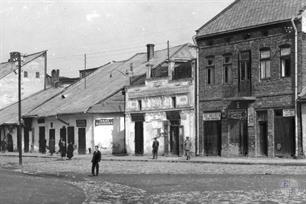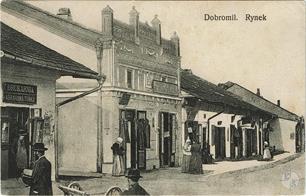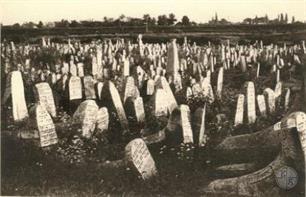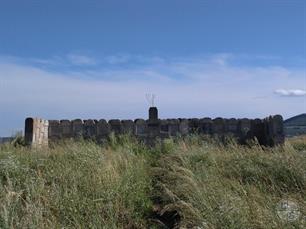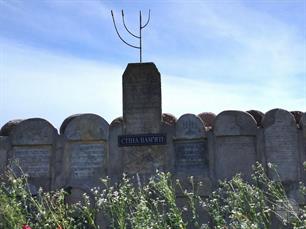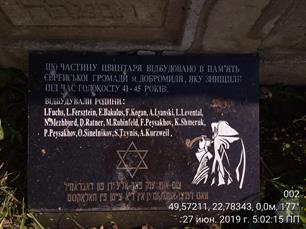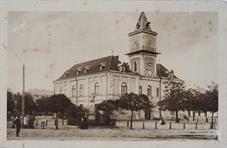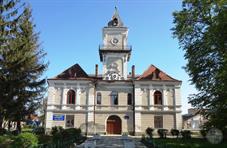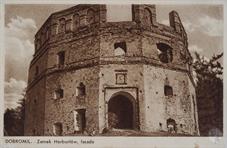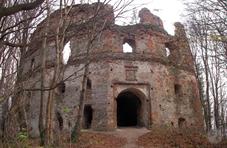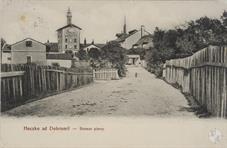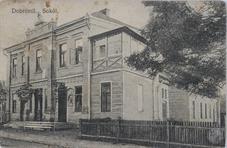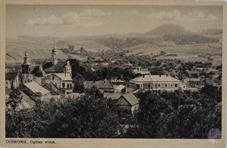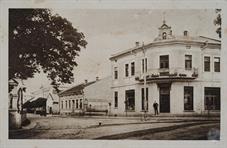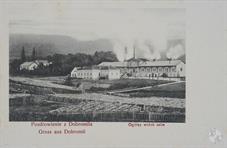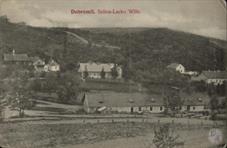Dobromyl
Sambir district, Lviv region
Sources:
- Pinkas Hakehillot Polin: Encyclopedia of Jewish Communities, Poland, Volume II, published by Yad Vashem, Jerusalem
- Russian Jewish encyclopedia
- Virtual Shtetl. Dobromil
Photo:
- Jewish Cemeteries Initiative. Dobromil Jewish Cemetery
- Biblioteka Narodowa Polona. Dobromil
- Wikipedia. Добромильська громада
- Tomek Wisniewski, Bagnowka. Dobromil
- Collection of Alex Friedman. Jewish Ukraine
- Pinkas Hakehillot Polin: Encyclopedia of Jewish Communities, Poland, Volume II, published by Yad Vashem, Jerusalem
- Russian Jewish encyclopedia
- Virtual Shtetl. Dobromil
Photo:
- Jewish Cemeteries Initiative. Dobromil Jewish Cemetery
- Biblioteka Narodowa Polona. Dobromil
- Wikipedia. Добромильська громада
- Tomek Wisniewski, Bagnowka. Dobromil
- Collection of Alex Friedman. Jewish Ukraine
Dobromyl (ukr. Добромиль), the town (since 1939) in Lviv region. Known since 1374. In the 16-18 centuries - in the Prshemysl district of the Russian Voivodeship as part of the Commonwealth. In 19 - beginning 20th century - city, the center of the hanging in the province of Galicia as part of Austria-Hungary.
In 1919–39 - as part of Poland, in 1939–91 - USSR.
In 1765 in Dobromyl lived 1253 Jews,
in 1860 - 850 (53.1%),
in 1870 - 1884 (62.3%),
in 1880 - 1918 (69.2%),
in 1890 - 2035 (62.9%),
in 1900 - 1845 (55.8%),
in 1910 - 2271 (62.5%),
in 1921 - 2119 Jews (61.7 %).
The first reference to the Jews in Dobromyl dates back to 1570.
In the 16th century the local Jewish municipality was subordinate to the Jewish municipality in Przemyśl from which it became independent in the 17th century.
In 1612, Jews received permission to build a synagogue.
At the end of the 18th century hhe German-Jewish school was opened in Dobromyl, closed in 1806.
In the 19th century 5 synagogues were in Dobromil, including 2 Hasidic.
In 1720s rabbi in Dobromyl was Itshok Segal, then his son Meir, in mid-18 century - Meshulem-Zusya Ashkenazi, then Arye Leib Gorvitz, in the beginning 19th century - Avrom-Mordhe Rimalt, then his son Elimelech-Menachem.
Many Jews of Dobromyl were Belz's Hasids.
In 1919–39 - as part of Poland, in 1939–91 - USSR.
In 1765 in Dobromyl lived 1253 Jews,
in 1860 - 850 (53.1%),
in 1870 - 1884 (62.3%),
in 1880 - 1918 (69.2%),
in 1890 - 2035 (62.9%),
in 1900 - 1845 (55.8%),
in 1910 - 2271 (62.5%),
in 1921 - 2119 Jews (61.7 %).
The first reference to the Jews in Dobromyl dates back to 1570.
In the 16th century the local Jewish municipality was subordinate to the Jewish municipality in Przemyśl from which it became independent in the 17th century.
In 1612, Jews received permission to build a synagogue.
At the end of the 18th century hhe German-Jewish school was opened in Dobromyl, closed in 1806.
In the 19th century 5 synagogues were in Dobromil, including 2 Hasidic.
In 1720s rabbi in Dobromyl was Itshok Segal, then his son Meir, in mid-18 century - Meshulem-Zusya Ashkenazi, then Arye Leib Gorvitz, in the beginning 19th century - Avrom-Mordhe Rimalt, then his son Elimelech-Menachem.
Many Jews of Dobromyl were Belz's Hasids.
In 1765, 1253 Jews lived in Dobromyl. Together with Poles, Ukrainians and Germans, the Jews formed a multi-ethnic and multi-cultural borderland town.
The Jews were mianly engaged in trade, craftsmanship and small-scale production.
After 1775 Dobromyl found itself under Austrian Annexation.
In 1871 a railway line from Przemyśl to Chyrуw was built which affected the economic revival of the town.
In 1908, in town was a school with teaching in Hebrew.
After Poland regained its independence the first census was conducted.
In 1920-30s there were branches of various Jewish parties and organizations.
During World War II, in June 1941, Soviets running from Wehrmacht soldiers conducted a massacre of the polish and ukrainian population in Dobromyl in which from 500 to 1000 people perished.
When the Germans later entered the city, the Jews met the same fate as the Poles and Ukrainians. Around one hundred orthodox Jews were burned in the synagogue.
Their bodies were thrown into the "Salina" mine shaft and flooded with cement. That place remains untouched up to this day.
In July 1942 the Nazis transported the remaining Jews of Dobromyl to the extermination camp in Bełżec.
After 1945, 25 Jews returned to Dobromyl.
The Jews were mianly engaged in trade, craftsmanship and small-scale production.
After 1775 Dobromyl found itself under Austrian Annexation.
In 1871 a railway line from Przemyśl to Chyrуw was built which affected the economic revival of the town.
In 1908, in town was a school with teaching in Hebrew.
After Poland regained its independence the first census was conducted.
In 1920-30s there were branches of various Jewish parties and organizations.
During World War II, in June 1941, Soviets running from Wehrmacht soldiers conducted a massacre of the polish and ukrainian population in Dobromyl in which from 500 to 1000 people perished.
When the Germans later entered the city, the Jews met the same fate as the Poles and Ukrainians. Around one hundred orthodox Jews were burned in the synagogue.
Their bodies were thrown into the "Salina" mine shaft and flooded with cement. That place remains untouched up to this day.
In July 1942 the Nazis transported the remaining Jews of Dobromyl to the extermination camp in Bełżec.
After 1945, 25 Jews returned to Dobromyl.

- Home
- Shtetls
- Vinnytsia region
- Volyn region
- Dnipro region
- Donetsk region
- Zhytomyr region
- Zakarpattia region
- Zaporizhzhia region
- Ivano-Frankivsk region
- Kyiv region
- Kropyvnytskyi region
- Luhansk region
- Lviv region
- Mykolayiv region
- Odessa region
- Poltava region
- Rivne region
- Sumy region
- Ternopil region
- Kharkiv region
- Kherson region
- Khmelnytskyi region
- Chernihiv region
- Chernivtsi region
- Cherkasy region
- Crimea
- Synagogues
- Cemeteries
- Objects & guides
- Old photos
- History
- Contact
Jewish towns of Ukraine
My shtetl
My shtetl
Donate
Jewish towns of Ukraine
